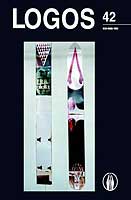MENIŠKOJI DOKUMENTO PRIGIMTIS: JUOZAPO KAMARAUSKO KŪRYBA
The Artistic Nature of the Document in Juozapas Kamarauskas' Creation
Author(s): Rūta STATULEVIČIŪTĖSubject(s): Fine Arts / Performing Arts
Published by: Visuomeninė organizacija »LOGOS«
Keywords: Juozapas Kamarauskas; Lithuanian or Vilnius art at the end of the 19th c. and the first part of the 20th c.
Summary/Abstract: This article is dedicated to an analysis of the artistic evaluation of Juozapas Kamarauskas' works. Their scientific and cognitive meaning and the painter's creative intentions are evaluated in comparison to art analogues from Lithuania and Europe. The artist is distinguished by the character and degree of his work and the deliberate thematic succession with his contemporaries. He was the only one interested in the innovative and complex reconstructions of Vilnius and Trakai castles, and the wall and gates of Vilnius at the end of the 19th century and the first part of the 20th century which was still not known and applied in Lithuania. Kamarauskas stands out due to his creative intention: the artist picked memorial buildings and strove to draw the most correct view. His aim was not artistic expression but an artistically formatted document. Many works by Kamarauskas do not have any analogues, either in contemporary Vilnius art or in Lithuanian art. Town plans-views give not only full-scale documentary information but also represent an odd artistic anachronism (the aspect of character rendition) and enrich contemporary regional art. Professional reconstructions and street evolvents of undoubted value have already done their job - they were used in the restoration of the Upper Castle's west tower and in the ordering of the Old Town. Kamarauskas created iconographically valuable pieces of art, not just technical wash-drawings and paintings, because of his application to his work. Composite instrumentalities and a manner of refined mimetic painting are analysed to evaluate Kamarauskas' work from an artistic aspect. Kamarauskas' concept and interpretation of the city theme are discussed in the context of Lithuanian and European art.
Journal: LOGOS - A Journal of Religion, Philosophy, Comparative Cultural Studies and Art
- Issue Year: 2005
- Issue No: 42
- Page Range: 184-193
- Page Count: 10
- Language: Lithuanian

